80x5 -
240x3 -
240x4 -
320x1 -
320x2 -
320x3 -
640x1 -
640x2
Set display option above.
Click on
images to enlarge. |
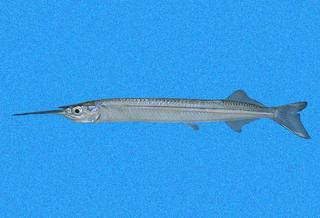
© Copyright Ross Robertson, 2006
· 12
Hyporhamphus snyderi |
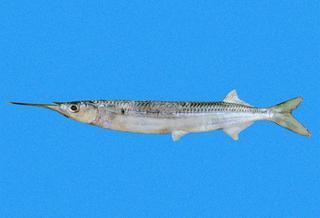
© Copyright Ross Robertson, 2006
· 12
Hyporhamphus naos |
|

© Copyright Ross Robertson, 2006
· 12
Hyporhamphus |
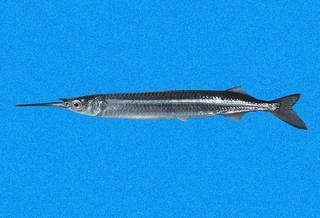
© Copyright Ross Robertson, 2006
· 12
Hyporhamphus naos |
|
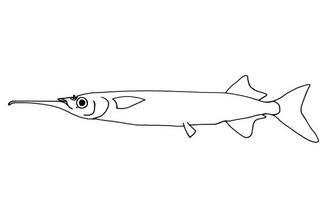
© Copyright Ross Robertson, 2006
· 12
Hyporhamphus rosae |
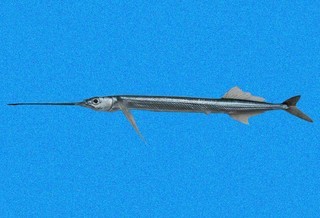
© Copyright Ross Robertson, 2006
· 12
Euleptorhamphus viridis |
|
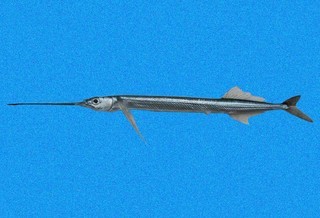
© Copyright Ross Robertson, 2006
· 12
Euleptorhamphus |
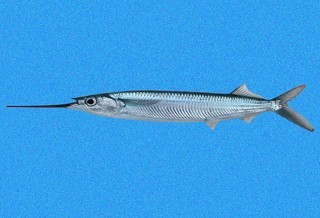
© Copyright Ross Robertson, 2006
· 12
Hemiramphus saltator |
|

© Copyright Ross Robertson, 2006
· 12
Hemiramphus |
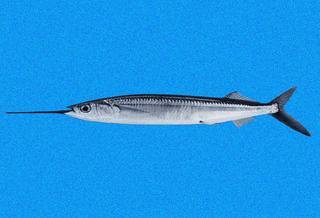
© Copyright Ross Robertson, 2006
· 12
Hemiramphus saltator |
|
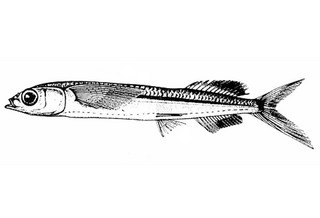
www.fao.org Copyright Michel Lamboeuf · 0
Oxyporhamphus |
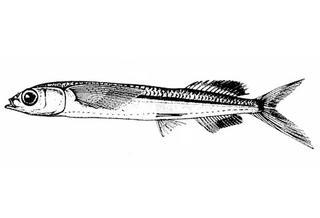
www.fao.org Copyright Michel Lamboeuf · 0
Oxyporhamphus micropterus micropterus |
|

© Copyright Gerald Allen, 2006
· 0
Hemiramphidae |
See
| | |
| | IDnature guides | |
| Overview |
Main identification features
- body very elongate
- c: forked, lower lobe longer
- jaws: lower very long, upper short
- dorsal fin anal fin pelvic at rear
FAMILY HEMIRAMPHIDAE
HALFBEAKS
Halfbeaks are elongate slender fishes that characteristically have the lower jaw extended into a long beak; the upper jaw is short and triangular in shape. There are no spines in the fins; the dorsal and anal fins are at the rear of the body, with their bases about opposite one another; the pelvic fins are under the abdomen; the pectoral fins are high on the sides and of variable length; the tail fin is forked or concave. The lateral line is positioned low on the sides of the body. May of these feature are sharer with flyingfishes, to which halfbeaks are closely relate.
Most species live near the sea's surface, frequently occurring in large schools. There are also a number of estuarine and freshwater species. They sometimes leap from the water and skitter across the surface. Euleptorhamphus viridis is capable of prolonged glides, similar to those of flying fishes. Halfbeaks exhibit diverse feeding habits; some are herbivores, feeding on floating seaweed, others are omnivores or carnivores, feeding on crustaceans and other small invertebrates. Their eggs are large and have adhesive filaments with which they attach themselves to floating objects. Although they are bony, the flesh of halfbeaks is considered good eating in some regions.
Halfbeaks occur circumglobally, mainly in tropical and temperate seas; the family contains 11 genera and about 104 species; 6 species in 3 genera occur in our region.
|
| References |
- Allen , G.R. and Robertson, D.R., 1994., Fishes of the Tropical Eastern Pacific., Crawford House Press Pty Ltd:1-332.
- Allen , G.R. and Robertson, D.R., 1997., An Annotated Checklist of the fishes of Clipperton Atoll, Tropical Eastern Pacific., Revista de Biologia Tropical, 45:813-843.
- Balart , E. F. , Castro-Aguirre , J. L. and De Lachica-Bonilla, F., 1997., Análisis comparativo de las comunidades ícticas de fondos blandos y someros de la Bahía de La Paz, B.C. S.. En Urbán Ramírez, J. y M. Ramírez Rodríguez (Eds.). La Bahía de La Paz investigación y conservación., Universidad Autónoma de Baja California Sur:177-188.
- Banford , H. M. and Collette, B. B., 2001., A new species of halfbeak Hyporhamphus naos (Belonidae: Hemirhamphidae) from the tropical eastern Pacific., Revista de Biologia Tropical, 49(Supplement 1):39-49.
- Breder, C.M. Jr., 1928., Scientific results of the second oceanographic expedition of the "Pawnee" 1926. Nematognathi, Apodes, Isospondyli, Synentognathi, and Thoracostraci from Panama to Lower California with a generic analysis of the Exocoetidae., Bull. Bingham Oceanogr. Collect. Yale Univ., 2(2):1-25.
- Béarez, P., 1996., Lista de los Peces Marinos del Ecuador Continental., Revista de Biologia Tropical, 44:731-741.
- Castri-Aguirre, J.L., Espinoza-Pérez, H. and Schmitter-Soto, J.J., 2002., Lista sitemática, biogeográfica y ecológica de la ictiofauna estuarino lagunar y vicaria de México. En: Lozano-Vilano, M. L. (Ed.). Libro Jubilar en Honor al Dr. Salvador Contreras Balderas., Universidad Autonoma de Nuevo León:117-142.
- Castro-Aguirre , J. L. and Balart, E. F., 1997., Contribución al conocimiento de la ictiofauna de fondos blandos y someros de la Ensenada de La Paz y Bahía de La Paz, B.C.S.. En Urbán Ramírez, J. y M. Ramírez Rodríguez (Eds.). La Bahía de La Paz investigación y conservación., Universidad Autónoma de Baja California Sur:139-150.
- Castro-Aguirre, J.L. and Balart, E.F., 2002., La ictiofauna de las islas Revillagigedos y sus relaciones zoogeograficas, con comentarios acerca de su origen y evolucion. En: Lozano-Vilano, M. L. (Ed.). Libro Jubilar en Honor al Dr. Salvador Contreras Balderas., Universidad Autonoma de Nuevo León:153-170.
- Castro-Aguirre, J.L., 1999., Ictiofauna estuarino-lagunar y vicaria de México., Editorial Limusa S.A. de C.V.: 1-629pp.
- Collette , B. B. and Banford, H. M., 2001., Tylosurus pacificus (Steindachner, 1876) (Beloniformes: Belonidae)., Revista de Biologia Tropical, 49(Supplement 1):51-57.
- Dasilao , J. C., Jr. , Sasaki , K. and Okamura, )., 1997., The Hemiramphid, Oxyporhamphus, is a flyingfish (Exocoetidae)., Ichthyological Research, 44:101-107.
- De la Cruz , J. , Galvan , F. , Abitia , L. A. , Rodriguez , J. and Gutierrez, F. J., 1994., Lista sistematica de los peces marinos de Bahia Magdalena, Baja California Sur (Mexico). Systematic List of marine fishes from Bahia Magdalena, Baja California Sur (Mexico)., Ciencias Marinas, 20:17-31.
- Eschmeyer , W. N. , Herald , E. S. and Hamman, H., 1983., A field guide to Pacific coast fishes of North America from the Gulf of Alaska to Baja California. Peterson Field Guide Ser. 28., Houghton Mifflin:336pp.
- Findley, L.T., Hendrickx, M.E., Brusca, R.C., van der Heiden, A.M., Hastings, P.A., Torre, J., 2003., Diversidad de la Macrofauna Marina del Golfo de California, Mexico., CD-ROM versión 1.0. Projecto de la Macrofauna del Golfo . Derechos reservados de los autores y Conservación Internacional.
- Fischer , W. , Krup , F. , Schneider , W. , Sommer , C. , Carpenter , K. E. and Niem, V. H., 1995., Guia FAO para la Identificacion de Especies de para los fines de la Pesca. Pacifico Centro-Oriental. Volumen II. Vertebrados - Parte 1., FAO2:647-1200.
- Fowler, H.W., 1944., Results of the Fifth George Vanderbilt Expedition (1941) (Bahamas, Caribbean sea, Panama, Galapagos Archipelago and Mexican Pacific Islands). The Fishes., Acad. Nat. Sci. Philadel., Monographs, 6:57-529.
- Franke , R. and Acero P., A., 1996., Peces óseos comerciales del Parque Gorgona, Pacífico colombiano (Osteichthyes: Muraenesocidae, Hemiramphidae, Belonidae, Scorpaenidae, Triglidae, Malacanthidae, Gerridae, Sparidae, Kyphosidae, Sphyraenidae e Istiophoridae)., Revista de Biologia Tropical, 44:763-770.
- Galván-Magaña, F., Abitia-Cárdenas, L.A., Rodríguez-Romero, J., Pérez-España, H., Chávez-Ramos, H., 1996., Systematics list of the fishes from Cerralvo island, Baja California Sur, Mexico., Ciencias Marinas, 22:295-311.
- Galván-Magaña, F., Gutiérrez-Sánchez, F., Abitia-Cárdenas, L.A., Rodríguez-Romero, J., 2000., The distribution and affinities of the shore fishes of the Baja California Sur lagoons. In Aquatic Ecosystems of Mexico: Status and Scope. Eds. M. Manuwar, S.G. Lawrence, I.F. Manuwar & D.F. Malley. Ecovision World Monograph Series., Backhuys Publishers:383-398.
- Gilbert , C.H. and Starks, E.C., 1904., The fishes of Panama Bay., Mem. Calif. Acad.Sci., 4:1-304.
- Gotshall, D.W., 1996., Fishes of Rocas Alijos. In Rocas Alijos. Ed. R. W. Schmieder. Cornell Expeditions., Kluwer Academic Publishers: 347-354.
- Hildebrand, S.F., 1946., A descriptive catalog of the shore fishes of Peru., Bull. U.S. Nat. Mus., 189:1-530.
- Jimenez-Prado, P., Béarez, P., 2004., Peces marinos del Ecuador continental / Marine fishes of continental Ecuador., SIMBIOE/NAZCA/IFEA tomo 1 y 2.
- Jordan , D.S. and Gilbert, C.H., 1880., Description of a new species of Hemirhamphus (Hemirhamphus rosae), from the coast of California., Proc. U.S. Nat. Mus., 3:335-336.
- Jordan , D.S. and Gilbert, C.H., 1882., List of Fishes now in the Museum of Yale College, Collected by Prof. Frank H. Bradley, at Panama, with Descriptions of Three New Species., Proc. U.S. Nat. Mus., 5:620-632.
- Jordan , D.S. and Gilbert, C.H., 1883., Catalogue of the fishes collected by Mr. John Xantus at Cape San Lucas, which are now in the United States National Museum, with descriptions of eight new species., Proc. U.S. Nat. Mus., 5(1882):353-371.
- Kendall , W.C. and Radcliffe, L., 1912., The shore fishes. Reports on the scientific results of the expedition to the eastern tropical Pacific, ... by the U.S. Fish Commission steamer ALBATROSS, from October, 1904, to March, 1905, Lieut. Commander L.M. Garret, U.S.N., Commanding. XXV., Mem. Mus. Comp. Zool., 35(3):75-171.
- Lopez , M. I. and Bussing, W. A., 1982., Lista provisional de los peces marinos de la Costa Rica., Revista de Biologia Tropical, 30(1):5-26.
- Love, M.S., Mecklenburg, C.W., Mecklenburg, T.A., Thorsteinson, L.K., 2005., es of the West Coast and Alaska: a checklist of North Pacific and Artic Ocena species from Baja California to the Alaska-Yukon border., U.S. Department of the Interior, U.S. Geological Survey, Biological Resources Division, 288pp.
- Madrid Vera , J. , Ruíz Luna , A. and Rosado Bravo, I., 1998., Peces de la plataforma continental de Michoacán y sus relaciones regionales en el Pacífico mexicano., Revista de Biologia Tropical, 42(2):267-276.
- Meek , S.E. and Hildebrand, S.F., 1923., The marine fishes of Panama. Part I., Field Mus. Nat. Hist., Zool. Ser. Publ., XV:1-330.
- Nelson, J.S., 1984., Fishes of the World (Third edition)., John Wiley and Sons:523pp.
- Orellana, J.J., 1985., Marine Fishes of Los Cóbanos: Fishes of El Salvador., Sigma Found:126pp.
- Osburn , R. C. and Nichols, J. T., 1916., Shore Fishes Collected by the 'Albatross' Expedition in Lower California with Descriptions of New Species., Bull. Amer. Mus. Nat. Hist., 35:139-181.
- Phillips, P. C., 1981., Annotated Checklist of Fishes at Jiquilisco Bay, El Salvador., Revista de Biologia Tropical, 29:45-58.
- Ranzani,., 1842., De nonnullis novis speciebus piscium. Opusculum tertium., Novi Comment. Acad. Sci. Inst. Bonon., 5:307-338.
- Ricker, K.E., 1959., Mexican shore and pelagic fishes collected from Acapulco to Cape San Lucas during the 1957 cruise of the "Marijean"., Univ. Brit. Columbia Inst. Fish., Mus. Contrib., 3:18pp.
- Robertson , D.R. and Allen, G.A., 1996., Zoogeography of the shorefish fauna of Clipperton Atoll., Coral Reefs, 15:121-131.
- Rosenblatt , R.H. , McCosker , J.E. and Rubinoff, I., 1972., Indo-west Pacific fishes from the Gulf of Chiriqui, Panama., Contrib. Sci. Nat. Hist. Mus. Los Angeles Co., 234:18pp.
- Rubio , R. E. A. and Estupiñan, F., 1990., Ictiofauna del Parque Nacional Natural Sanquianga, un Analisis de su Estructura y Perspectivas para su Manejo., Memorias del VII Seminario Nacional de las Ciencias y Tecnologías del Mar. Comisión Colombiana de Oceanografía. Bogota, Colombia., :660-670.
- Rubio, E.A., 1988., Estudio taxonomico de la ictiofauna acompañante del camaron en areas costeras del Pacifico de Colombia., Memorias del VI Seminario Nacional de las Ciencias del Mar. Comisión Colombiana de Oceanografía. Bogota, Colombia., :169-183.
- Snodgrass , R. E. and Heller, E., 1905., Papers from the Hopkins Stanford Galapagos expedition, 1898-1899. XVII. Shorefishes of the Revillagigedo, Clipperton, Cocos and Galapagos Island., Proc. Wash. Acad. Sci., 6:333-427.
- Van Hasselt, J. C., 1823., Uittreksel uit een' brief van Dr. J. C. van Hasselt, aan den Heer C. J. Temminck., Algem. Konst Letter-bode, (35):130-133.
- Van der Heiden , A. M. and Findley, L. T., 1988., Lista de los peces marinos del sur de Sinaloa, México., Anales del Centro de Ciencias del Mar y Limnologia de la Universidad Autonoma Nacional de Mexico, 15:209-224.
- Villareal-Cavazos, A., Reyes-Bonilla, H., Bermúdez-Almada, B. and Arizpe-Covarrubias, O., 2000., Los peces del arrecife de Cabo Pulmo, Golfo de California, México: Lista sistemática y aspectos de abundancia y biogeografía., Rev. Biol. Trop., 48:413-424.
- Walker, B. W. and Baldwin, W. J., 1964., Provisional check list of fishes of the Revillagigedo islands., 18 pp.
|
| Acknowledgements | |
I thank Ashley MacDonald and John Pickering, University of Georgia, for technical support in building this page.
|
Top
Updated: 2024-09-21 00:57:18 gmt
© Designed by The Polistes Corporation
|
|